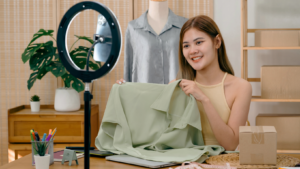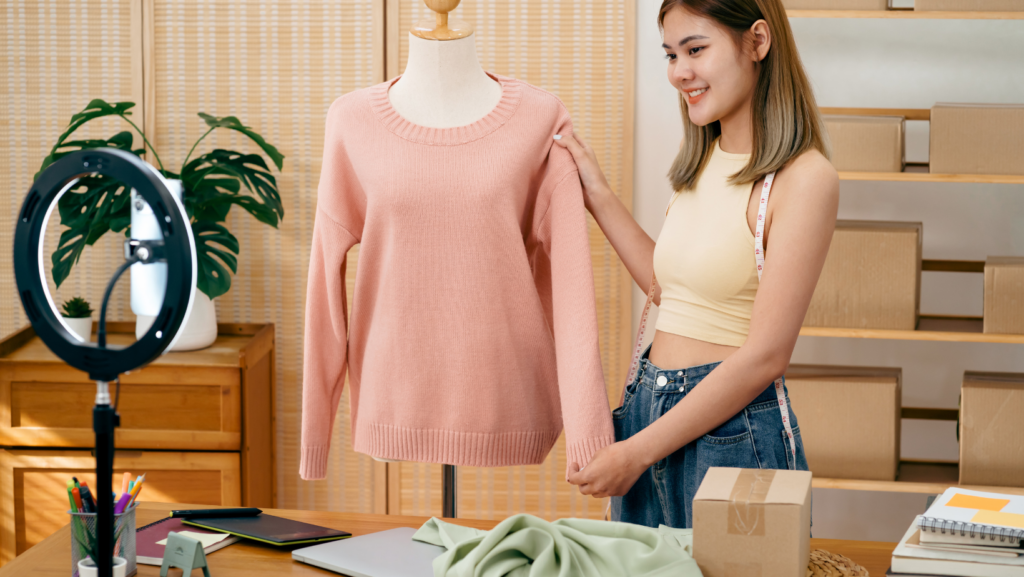In the digital age, how to start a online retail clothing store has become an attractive venture for many. It’s a dynamic industry that blends creativity, fashion, and e-commerce, offering a unique opportunity for entrepreneurs to make their mark. This article will guide you through the intricacies of launching how to start a online retail clothing store.
From choosing your niche to understanding the market dynamics, it’s crucial to be well-prepared before stepping into the world of online retail. Whether you’re a seasoned business owner or a budding entrepreneur, this guide will provide you with the essential knowledge needed to successfully navigate the online retail landscape. So, let’s dive in and explore the exciting world of online clothing retail.
How To Start a Online Retail Clothing Store
 Selecting a specific niche is critical in the competitive world of how to start a online retail clothing store; it helps individualize one’s store and stand apart from the competition. This section focuses on two main components: analyzing market trends and identifying target customers.
Selecting a specific niche is critical in the competitive world of how to start a online retail clothing store; it helps individualize one’s store and stand apart from the competition. This section focuses on two main components: analyzing market trends and identifying target customers.
Examining market trends is not just crucial, it’s an ongoing requirement for successful online retailers. It involves observing what clothing styles, patterns, and brands are currently in vogue in the retail sector. Clothing preferences fluctuate regularly and can be influenced by various factors, such as seasonal changes, celebrity endorsements, and even global events.
For instance, global fashion reports indicate that in 2022, consumers have shown a significant inclination towards sustainable and ethically made fashion. Therefore, retailers aware of such trends might consider incorporating eco-friendly products into their offerings.
Identifying Target Customers
Knowing the target customers forms the foundation of any successful online retail clothing venture. To do this, online retailers should conduct thorough demographic research, focusing on aspects such as age, gender, location, occupation, and socio-economic status.
For example, a store concentrating on streetwear might target the age group of 18 to 35, who have a high interest in urban culture and music. Meanwhile, a shop focusing on chic maternity wear would primarily cater to expectant mothers.
Setting Up Your E-commerce Platform
 Continuing the journey towards how to start a online retail clothing store, the next significant step involves setting up an efficient e-commerce platform. An optimal platform champions the functionality of the business, striking a fine balance between visual appeal and smooth operation.
Continuing the journey towards how to start a online retail clothing store, the next significant step involves setting up an efficient e-commerce platform. An optimal platform champions the functionality of the business, striking a fine balance between visual appeal and smooth operation.
Choosing an e-commerce platform is akin to laying the foundation for your online clothing store. There are numerous platforms, like Shopify, Magento, and WooCommerce, each with its unique features and benefits. The choice generally hinges on factors such as the size of the business, expected traffic, customizable features, pricing models, and customer support. For instance, a start-up might find Shopify’s user-friendly interface helpful, while a large online boutique may prefer Magento’s robust functionality.
Once the platform has been selected, the design of the website comes into play. The design should reflect the brand’s personality and engage shoppers effectively. A clean and easy-to-navigate layout, coupled with high-quality product images and descriptions, can significantly improve the shopping experience.
Sourcing Your Products
 After configuring an e-commerce platform and designing a user-friendly website, sourcing your products becomes the primary objective. Including a variety of textiles and creations, a successful online retail clothing store has an array of unique products.
After configuring an e-commerce platform and designing a user-friendly website, sourcing your products becomes the primary objective. Including a variety of textiles and creations, a successful online retail clothing store has an array of unique products.
Collaborating with reliable manufacturers aids in procuring quality clothing items. Though gauging the manufacturer’s credibility presents a challenge, inspecting samples of their products helps in evaluating their capability. For example, a manufacturer producing high-quality silk clothes shows their proficiency, implying their competence to handle your clothing line.
Interacting with multiple manufacturers not only assists in understanding distinct production techniques but also yields insights into different quality checks. For instance, engaging with manufacturer A discloses their stringent quality check process enforcing quality assurance, while engaging with manufacturer B elaborates on the importance of material selection in maintaining overall quality.

